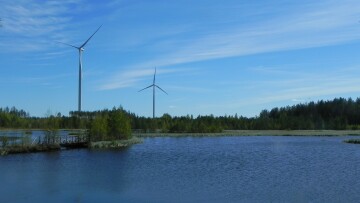A new study identifies priority areas for bird conservation in the context of wind energy in Finland
Wind energy is a fast-growing renewable energy source that is expected to play a major role in the ongoing energy transition. “Wind energy expansion and birds: Identifying priority areas for impact avoidance at a national level” is a new publication in Biological Conservation that highlights the importance of site selection and spatial planning as a means to protect birds from the expansion of wind energy. The publication is the result of research collaboration between Novia University of Applied Sciences (UAS) and the University of Helsinki.
Focusing on more than 200 bird species, the study aimed to identify which areas are inhabited by the species that are most sensitive to wind energy, thereby providing preliminary spatial guidance for impact avoidance.
“Our research showed that high-priority areas for bird conservation are mainly distributed along the coast and in adjacent areas. This means that there is a marked difference in bird conservation importance between Finland’s regions. Indeed, some sensitive species occur exclusively or primarily in coastal areas”, explains lead author Fabio Balotari-Chiebao, researcher at Novia UAS.
The study also highlighted that the current network of protected areas appears insufficient to safeguard sensitive species. For example, only 15% of 10% top priority areas are under some level of legal protection. “An adequate expansion of protected areas should be a global priority, given the multiple pressures imposed on biodiversity, including energy transition”, concludes Fabio Balotari-Chiebao.
The study recommends that wind energy development be avoided in the identified high-priority areas for bird conservation, and that spatial planning be conducted very carefully in areas where conflicts are likely to be high.
About the publication
The study was published in Biological Conservation in January 2023.
Link to the article: https://doi.org/10.1016/j.biocon.2022.109851.
Authors: Fabio Balotari-Chiebao, Andrea Santangeli, Sirke Piirainen & Patrik Byholm.
Contact for further information
Novia UAS, Researcher Fabio Balotari-Chiebao: fabio.balotari@novia.fi
Photo: Fabio Balotari-Chiebao
